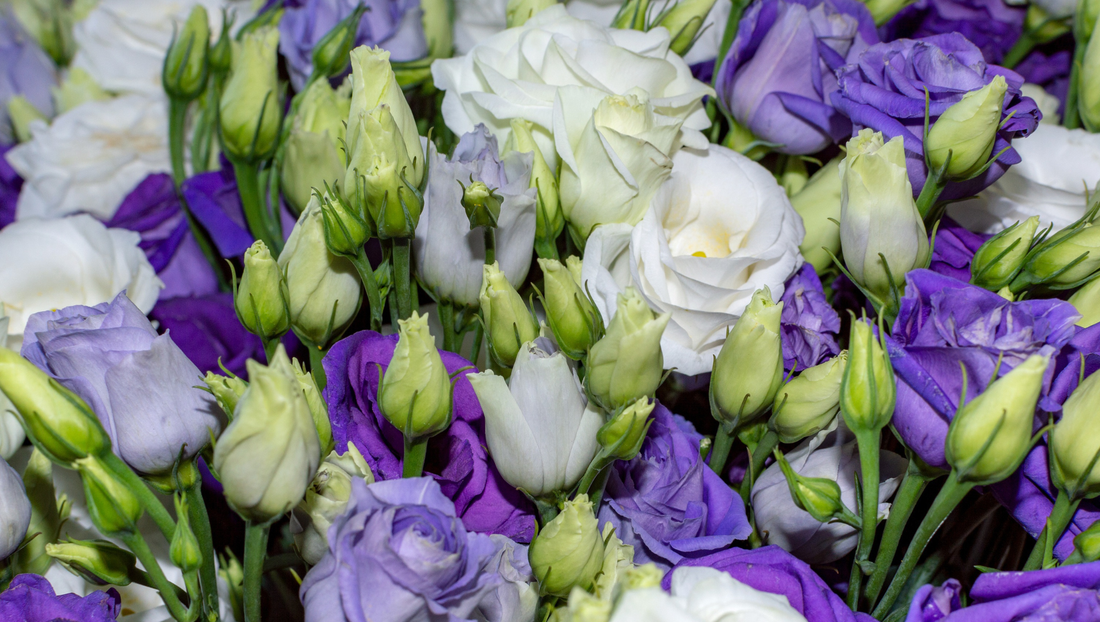
Lisianthus vs. Roses: How These Romantic Blooms Differ
Share
When searching for the perfect bouquet from a Bangkok florist or browsing options for flower delivery in Thailand, you’ll quickly notice that two flowers often take the spotlight: the Lisianthus and the Rose. At first glance, these blooms can sometimes be mistaken for each other—both delicate, both romantic, both versatile enough to appear in everything from wedding bouquets to everyday gifts. But beyond their beauty, Lisianthus and Roses have unique qualities that set them apart.
At Best Bloom Buddy, where we specialize in creating heartfelt arrangements with same-day flowers delivery, we want our customers to truly understand what makes each flower special. Here’s a closer look at Lisianthus vs. Roses, and how to decide which one is right for your next bouquet.
What Makes Lisianthus Stand Out?
The Lisianthus (also known as Eustoma) is often described as the “gentle twin” of the Rose. Its petals are soft, thin, and paper-like, creating a romantic, airy look. From a distance, many people confuse Lisianthus for Roses because of their layered petals and similar blooming shapes.
One of Lisianthus’s most beloved traits is its delicate elegance. While Roses can feel bold and classic, Lisianthus tends to look softer, more graceful, and understated. They are often used in pastel-colored arrangements, bridal bouquets, and gentle-themed flower boxes.
Lisianthus also comes in a wide range of colors—white, pink, lavender, cream, and even soft green. This variety makes it a versatile flower for expressing subtle emotions such as appreciation, gratitude, and gentle love.
Symbolically, Lisianthus represents charisma, appreciation, and a deep emotional bond, making it a thoughtful alternative to Roses for occasions where you want something unique yet equally romantic.
Why Roses Remain Timeless
On the other hand, Roses are the undisputed classic of the flower world. Known globally as the flower of love, Roses are instantly recognizable and universally adored. From a passionate bouquet of red Roses to soft blush tones and elegant whites, Roses carry a symbolism that transcends cultures and generations.
What sets Roses apart is not just their beauty, but also their versatility and availability. Roses are cultivated year-round, and they come in countless varieties—standard roses, spray roses, and garden roses, each with their own character. Whether you’re celebrating Valentine’s Day, a wedding anniversary, or sending sympathy flowers, Roses fit seamlessly into every occasion.
Symbolically, Roses carry a spectrum of meanings depending on their color:
- Red for love and passion
- White for purity and respect
- Pink for admiration and joy
- Yellow for friendship and happiness
This flexibility makes Roses the most widely chosen flower for both everyday gifting and milestone moments.
Key Differences Between Lisianthus and Roses
While Lisianthus and Roses share some similarities, their differences make each flower shine in its own way:
- Texture and Look: Lisianthus petals are thinner and softer, almost paper-like, giving them a delicate, floating charm. Roses, in contrast, have thicker petals with a more structured appearance.
- Durability: Roses are generally more robust and last longer in arrangements. Lisianthus is more delicate and may require extra care to keep fresh.
- Availability: Roses are grown and available worldwide throughout the year, while Lisianthus is less common but still widely accessible through a Bangkok florist.
- Symbolism: Roses are powerful symbols of love, romance, and tradition, while Lisianthus conveys gentleness, appreciation, and unique emotional connection.
- Price Point: Depending on the variety, Roses can range from affordable to luxury (such as garden roses). Lisianthus is often priced moderately and adds a luxurious, soft feel to bouquets without being as expensive as rare blooms like Peonies.
Which Should You Choose?
The answer depends on the mood you want your bouquet to express.
- Choose Lisianthus if you want something soft, romantic, and slightly different from the mainstream choice of Roses. It’s perfect for pastel-themed bouquets, weddings, and occasions where you want to emphasize elegance and tenderness.
- Choose Roses if you want a timeless gesture that everyone recognizes. They are ideal for bold romantic statements, classic arrangements, and occasions where you want your message of love to be instantly clear.
In many of our designs at Best Bloom Buddy, we love to combine Roses and Lisianthus together. The Roses provide structure and symbolism, while Lisianthus adds a soft, floating texture that makes the arrangement feel fresh, layered, and unique.
Why This Matters for Flower Delivery in Thailand
If you are an international customer considering flower delivery in Thailand, knowing the difference between Lisianthus and Roses can help you choose the bouquet that perfectly conveys your message. Both flowers are available through our same-day flowers service in Bangkok and major cities, so you never have to worry about missing a special moment.
When you shop with Best Bloom Buddy, you can trust that your bouquet will arrive fresh, beautifully arranged, and suited to the occasion—whether you want the timeless beauty of Roses or the graceful charm of Lisianthus.
Final Thoughts
Both Lisianthus and Roses are stunning flowers, each carrying their own symbolism, personality, and charm. Roses remain the classic expression of love and romance, while Lisianthus offers a softer, more delicate alternative that is equally meaningful.
At Best Bloom Buddy, we are proud to bring both flowers to our customers, whether you are shopping locally or ordering internationally for someone you love in Thailand. With our trusted Bangkok florist service, expert arrangements, and reliable same-day flowers delivery, we make sure your gift speaks from the heart.
💐 Best Bloom Buddy – Your friendly flower delivery in Thailand, bringing smiles and blooms to every special day.
